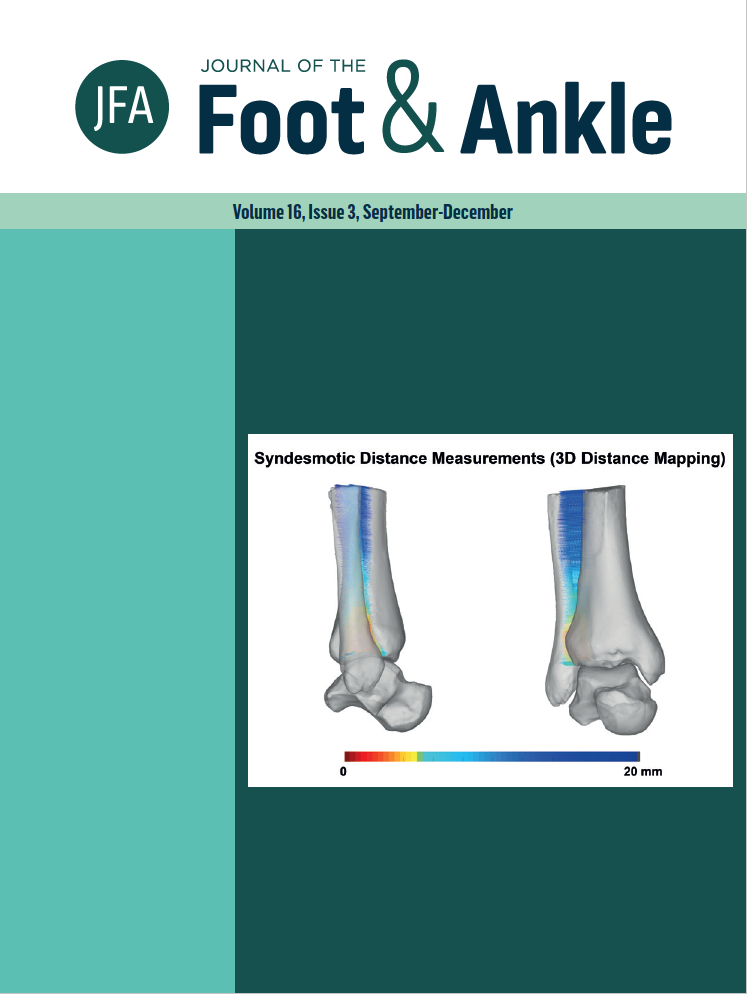Classification variability of ankle fractures between physicians with and without the title of specialist in orthopedics and traumatology (TEOT)
DOI:
https://doi.org/10.30795/jfootankle.2022.v16.1654Keywords:
Ankle fractures, Classification, Observer variationAbstract
Objective: Evaluate the classification variability of ankle fractures among physicians with and without the title of specialist in orthopedics and traumatology (TEOT) from a reference service. Method: The study included 40 physicians who informed the year of training, the period they obtained TEOT, and which ankle fracture classification system(s) they use in their clinical practice. The physicians evaluated ten radiographs of five patients with ankle fractures and classified them based on the three classification systems; Lauge-Hansen, AO/OTA, and Danis-Weber. Result: Most physicians with TEOT between one and five years (n=19, 47.5%), and 15 (48.4%) physicians used the Lauge Hansen and Danis-Weber classifications. Regarding the radiographs evaluated, most (27.5%) physicians obtained correct answers using the Danis-Weber classification. It was also observed that the physicians with the lowest rates of correct answers in the classifications were those without TEOT (44.4%). Conclusion: Most physicians adequately classified the five cases of ankle fracture using the Danis-Weber classification. The highest frequency of correct answers was from the physicians with TEOT. Level of Evidence VI; Observational Descriptive Study.
Downloads
Published
How to Cite
Issue
Section
License
Copyright (c) 2022 Journal of the Foot & Ankle

This work is licensed under a Creative Commons Attribution-NonCommercial 4.0 International License.







